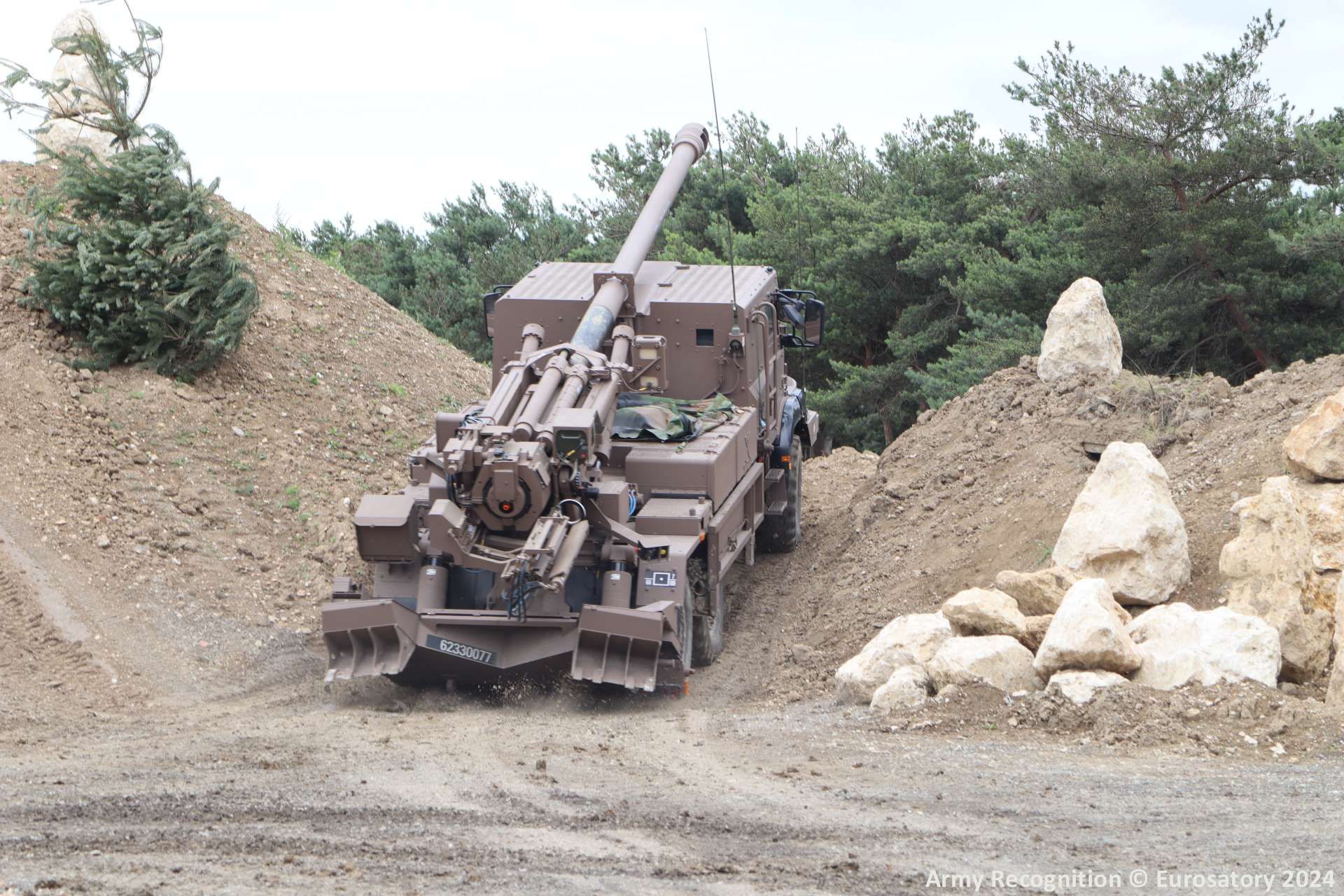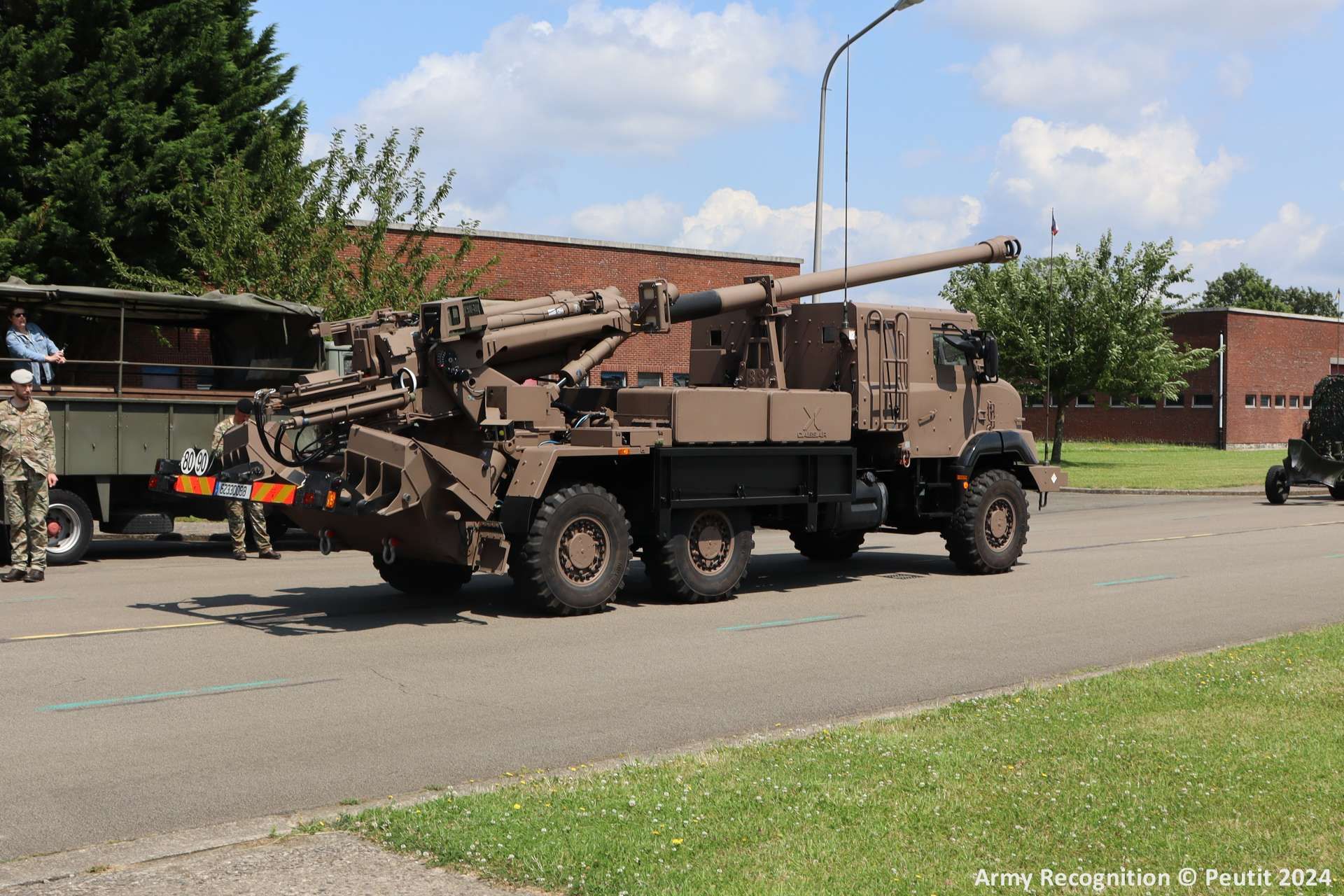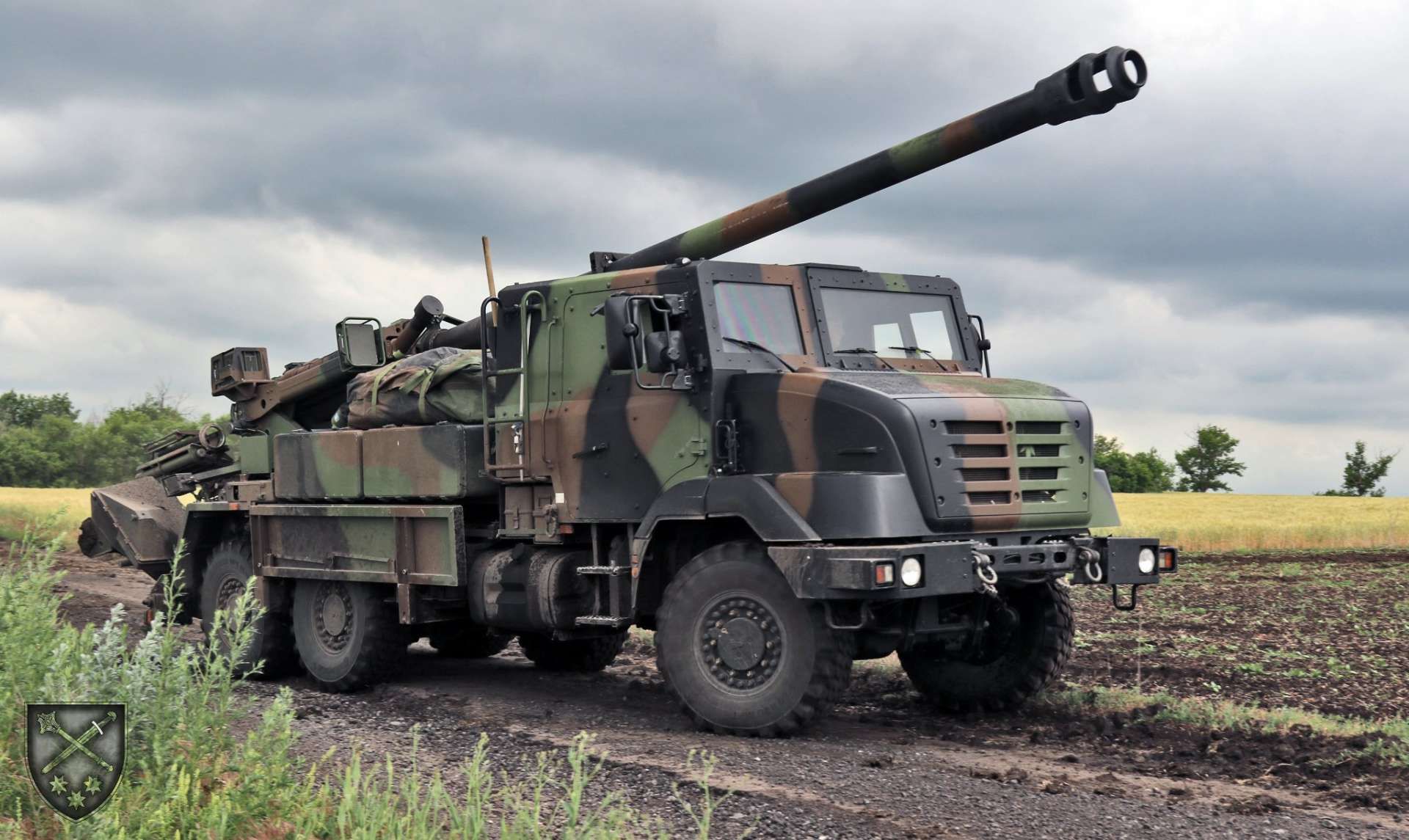Breaking News
Belgium to send three Caesar 155mm self-propelled howitzers valued at €12 million to Ukraine.
As reported by the RTBF on October 2, 2024, Belgium is preparing to donate three Caesar 155mm self-propelled howitzers to Ukraine as part of a larger initiative to support the country during its ongoing conflict with Russia. The proposal, valued at €12 million, includes both the acquisition and donation of the artillery units. It is expected to be submitted to the Council of Ministers soon, according to the office of Defense Minister Ludivine Dedonder.
Follow Army Recognition on Google News at this link

To date, the CAESAR family of self-propelled howitzers, developed by Nexter Systems, includes the 6x6 Mk1, Mk2, and 8x8 variants, with more than 600 units currently in service or on order. (Picture source: Army Recognition)
The Caesar, manufactured by the French company Nexter, is a 155mm truck-mounted howitzer known for its mobility and rapid-fire capabilities. It can fire six rounds per minute and hit targets at distances of up to 40 kilometers. More than 300 units have been sold in various configurations to countries such as France, Denmark, the Czech Republic, Thailand, Indonesia, and several Middle Eastern nations. The system has demonstrated operational effectiveness in diverse theaters, notably during its extensive use by the French military against the Islamic State in Iraq from September 2016 to April 2019.
Since February 2022, France has delivered 30 Caesar systems to Ukraine, significantly enhancing its artillery capabilities. Their high mobility allows operators to engage targets quickly and withdraw before enemy detection, reducing the risk of counter-battery fire. Ukrainian forces have praised the Caesar howitzers for their mobility, precision, and extended range, especially in counter-battery situations. Their ability to quickly deploy and retreat has improved survivability and operational effectiveness, despite some challenges with maintenance and mobility in muddy conditions. The system's impact on Russian forces has led to efforts by Russian units to target and destroy these assets.
In January, France led the creation of an "artillery coalition" alongside the United States to strengthen Ukraine's military efforts. This coalition, launched in early 2024, involves 23 participating countries and aims to enhance Ukraine's artillery capabilities in both the short and long term. France has pledged to deliver 78 Caesar howitzers, 72 of which are to be newly manufactured by Nexter within the year. The coalition's goal is to ensure Ukraine receives critical artillery systems and ammunition to strengthen its defense against Russian advances. France will also supply 3,000 155mm shells per month, marking a substantial increase from earlier production rates.

As part of the Artillery Coalition, France has pledged to deliver 78 Caesar howitzers, 72 of which are to be newly manufactured by Nexter within the year. (Picture source: Army Recognition)
The coalition's broader mission is to establish a sustainable supply chain for artillery and facilitate the transition of Ukraine's forces to NATO-compatible systems. This initiative operates within the framework of the Ramstein format, a larger defense collaboration structure that organizes support for Ukraine across five key military domains, including artillery. Ukraine’s defense minister has emphasized the crucial role of artillery in the conflict, which heavily relies on artillery exchanges. The Caesar howitzers are set to be modernized based on feedback from Ukrainian forces to enhance their effectiveness further.
Financial support is also a key focus of the coalition. France has allocated 50 million euros to fund 12 of the 72 new howitzers, while appealing to coalition partners to contribute the remaining funds for 60 additional units. This financial effort is vital as Ukraine transitions to a war economy, relying on international support to maintain its artillery capabilities and resist Russian advances. Belgium, which joined the coalition in May, will contribute three Caesar systems as part of this collective effort. France has committed to providing 12 systems, utilizing its Ukraine Support Fund to finance the contribution.
Belgium has provided significant military aid to Ukraine since 2022, particularly focusing on enhancing mobility and firepower for Ukrainian forces. Key contributions include 80 Iveco LMV Infantry Mobility Vehicles (IMVs) delivered since April 2023, with an additional 300 pledged in 2024. Belgium also supplied 40 M113 Armoured Personnel Carriers (APCs), some equipped with Remote Weapon Stations, as part of a joint donation with the Netherlands and Luxembourg. The country has also supported Ukraine’s aerial defense capabilities, pledging several Mistral and AIM-120 missiles, and training pilots on F-16 jet fighters, with 30 F-16s promised by 2028. Additionally, on June 11, 2024, the Belgian company John Cockerill announced its engagement in adapting and supplying Bandvagn 206 (BV 206) all-terrain vehicles for the Ukrainian army.

Typically mounted on a Renault Sherpa 10 chassis, the CAESAR 6x6 is equipped with a 155mm/52-caliber gun capable of firing six rounds per minute with a maximum range of 42 kilometers using base bleed shells. (Picture source: Army Recognition)
In naval aid, Belgium committed to donating three minehunter ships in 2024, including the Tripartite-class minehunter Narcis, which will undergo maintenance before being delivered. The Belgian Navy has also trained Ukrainian crews in minehunter operations. In addition, Belgium pledged naval reconnaissance drones and unmanned underwater vehicles to enhance Ukraine's maritime capabilities. On the ground, anti-tank and anti-air weapons have been a focus, with contributions including 1,260 RGW 90 Matadors, MILAN anti-tank guided missiles, and heavy mortars.
Belgium’s military aid also includes extensive small arms, ammunition, and logistical support. Contributions range from thousands of FN FNC, FN FAL, and FN SCAR-L assault rifles to over 1.5 million rounds of 12.7 mm ammunition. Additionally, Belgium pledged €373.1 million in March 2024 for further artillery munitions and contributed €200 million to a Czech initiative to procure 155 mm shells for Ukraine. Other crucial equipment includes night vision goggles, flak jackets, fuel, generators, and CBRN mobile laboratories.
The CAESAR 6x6, developed by Nexter Systems, is a French truck-mounted self-propelled howitzer intended to replace older towed artillery systems. Development began in the early 2000s, and the system entered service with the French Army in 2008. It is typically mounted on a Renault Sherpa 10 chassis but can be adapted to other chassis based on customer needs. The CAESAR is equipped with a 155mm/52-caliber gun capable of firing six rounds per minute with a maximum range of 42 kilometers using base bleed shells. It is designed for rapid deployment and can be transported by C-130 aircraft.

The CAESAR 6x6 is equipped with an advanced fire control system that enables quick targeting and relocation after firing, aimed at reducing the risk of counter-battery fire. (Picture source: Army Recognition)
The CAESAR 6x6 has been deployed in various military operations and peacekeeping missions, including in Afghanistan, Mali, Lebanon, Iraq, and Ukraine. The system is built on a high-speed wheeled chassis that allows it to travel up to 100 km/h on roads and maintain off-road capabilities. It includes an advanced fire control system that enables quick targeting and relocation after firing, aimed at reducing the risk of counter-battery fire. The system weighs approximately 18 metric tons and can be set up for operations in less than a minute.
The CAESAR 6x6 has been updated with the Mark II variant, which includes improved protection, a stronger engine, and advanced electronics. It is used by the French Army and other countries, with exports to Denmark, Thailand, Indonesia, and Middle Eastern nations. The system has been deployed in various operational environments, including its use in Ukraine, where it has been noted for its mobility and range in counter-battery fire situations.
To date, the CAESAR family of self-propelled howitzers, developed by Nexter Systems, includes the 6x6 Mk1, Mk2, and 8x8 variants, each focused on enhancing mobility, firepower, and operational flexibility. The latest model, the CAESAR Mk2, was presented at Eurosatory 2024 and includes upgrades such as reinforced protection, a more powerful engine, and advanced electronics. It can achieve a range of up to 55 kilometers using advanced ammunition. The 6x6 Mk1 and Mk2 provide mobile artillery support and are designed for rapid deployment, while the 8x8 version, introduced in 2015, has a higher payload capacity and automatic loading system. Both systems are used in several countries, with more than 600 units currently in service or on order.

The CAESAR 6x6 howitzers are noted by Ukrainian forces for their mobility, precision, and range of up to 40 kilometers, particularly in counter-battery fire situations. (Picture source: Facebook/55oabr)


























